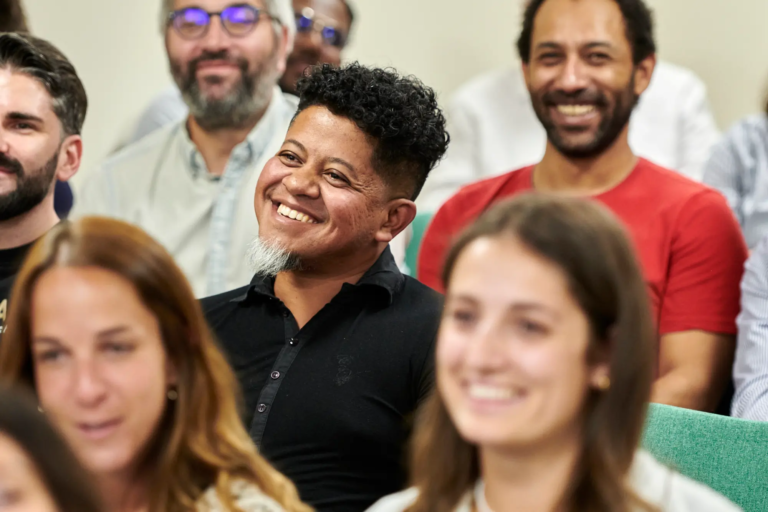
The keys to successful training

- 1. Finding the right balance between face-to-face and remote learning
- 2. Create a supportive and stimulating atmosphere
- 3. Allow time for assimilation
- 4. Finding harmony between theory and practice
- 5. Maintain an optimal number of learners
- 6. Vary activities to avoid top-down training
- 7. Spark interest and encourage forward thinking
- 8. Capitalise on the trainer's experience: an accelerator for learning
The success of a training program depends on much more than simply imparting knowledge.
It depends on a subtle balance between several key factors that promote effective and lasting learning. Whether face-to-face or distance learning, well thought-out organization, a motivating atmosphere and appropriate pedagogy are essential to guarantee continuous progress.
Find out in this article what you need to know to ensure long-term training success.
1. Finding the right balance between face-to-face and remote learning
The rise of technology has transformed learning methods, offering greater flexibility.
Face-to-face training reinforces human interaction and group dynamics, while distance learning enables independent time management and personalized revision.
💡 Opt for a hybrid model combining face-to-face sessions, conducive to exchanges and role-playing, and remote times to deepen knowledge at your own pace.
2. Create a supportive and stimulating atmosphere
An engaging training environment combines conviviality and seriousness. Humor and friendliness build confidence and involvement.
However, it is essential to maintain a high standard to ensure that everyone progresses.
💡 Encourage active participation in a structured setting, where each learner can express themselves freely while respecting quality standards.
3. Allow time for assimilation
A common mistake in training is to saturate learners with information without giving them time to assimilate the essential notions. Memorization and comprehension require pauses and moments of reflection.
💡 Alternate between theory and practice, and include application exercises to anchor learning in the long term.
4. Finding harmony between theory and practice
Theory lays the essential foundations, but it’s the practical application that transforms knowledge into operational skills.
Too much theory can make learning abstract, while practice without a conceptual framework limits understanding.
💡 Combine each theoretical concept with real-life situations, case studies and practical exercises.
Want to learn Salesforce?
We also co-create with you, the training courses that fully meet your needs.
Contact us to find out more.
5. Maintain an optimal number of learners
Group size has a direct impact on the quality of exchanges and learning dynamics.
Too large a group limits interaction, while too small a group can restrict the diversity of viewpoints.
💡 Adjust the number of participants according to the training objectives to optimize interaction and collective intelligence.
6. Vary activities to avoid top-down training
Effective learning does not rely solely on top-down transmission of knowledge. Learners need to be actively involved in their own training, so that they can better assimilate concepts and apply them in practice.
The integration of interactive methods, such as collaborative workshops, case studies, role-playing games or group discussions, helps to boost commitment and information retention.
💡 Alternate teaching formats to stimulate attention and encourage active learning.
7. Spark interest and encourage forward thinking
Learning takes on its full meaning when learners can project themselves into real-life situations where they will apply their new skills.
Effective training must not only impart knowledge, but also help people visualize its usefulness in a professional or personal context.
By integrating concrete scenarios, inspiring testimonials and development perspectives, participants better understand the direct impact of their learning and stay motivated over the long term.
💡 Illustrate concepts with concrete examples and demonstrate their impact on learners’ professional development.
8. Capitalise on the trainer's experience: an accelerator for learning
A trainer who knows the terrain makes all the difference.
His professional experience lends immediate credibility and transforms every theoretical notion into a concrete example. By sharing his successes, mistakes and real-life cases, he captures attention, gives meaning to content, and makes learning more lively and applicable.
The result: participants are more involved, have a better understanding of the business issues at stake, and leave with keys that can be put to immediate use.
💡 Use field experience as a driver of commitment and skills enhancement.
To remember
Successful long-term training requires a balanced and thoughtful approach. Success relies on a subtle combination of theory and practice, face-to-face and distance learning, humor and seriousness, all the while ensuring an optimal number of learners.
By fostering a friendly atmosphere, allowing time for assimilation and projecting learners into real-life situations, we give them the best chances of success and development.





